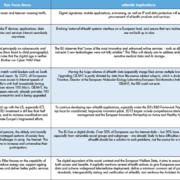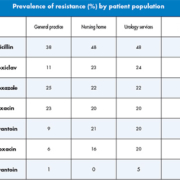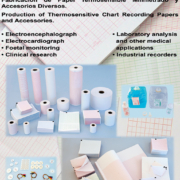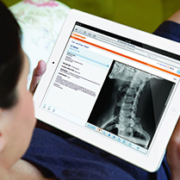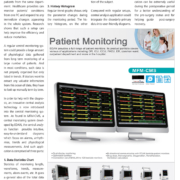At ECR 2013 Carestream is showcasing a raft of new solutions designed to help radiology professionals improve patient care. These include a new portal that allows patients to electronically access and manage their X-ray exams; new lesion management tools that can help enhance accuracy in assessing changes in cancerous lesions and, as a works-in-progress, a smaller-format digital radiography detector that provides high-quality, dose-sensitive X-ray images for pediatric, orthopedic and general radiology exams.
Healthcare IT
The MyVue patient portal empowers patients to electronically access and manage their X-ray exams—and then share that data with specialists and other healthcare professionals. The Web-based portal is implemented by healthcare providers to allow patients to download information to PCs, laptops, iPads or other devices. It is easy to use and reduces the time and cost of outputting medical exams onto DVD/CDs or other physical storage formats for medical records. My Vue is currently available as an option for Vue PACS and Vue Archive users and is now available for order as a Vue Cloud Service.
New lesion management tools can help enhance accuracy in assessing changes in cancerous lesions as part of diagnosis and treatment for oncology patients. A native follow-up application that can be added to Vue PACS, the new module provides semi-automatic tracking and segmentation of lesions from modalities. Each measurement generates an anatomical bookmark within the exam.
Enhancements to Carestream’s RIS including the storage and tracking of radiation dose information and other capabilities that lay the groundwork to support cumulative dose tracking, which is an important patient care initiative worldwide.
Digital Capture
In the wireless digital radiography market, a smaller-format 25 cm x 30 cm Carestream DRX 2530C detector is demonstrated as a work in progress. The new cesium iodide detector is designed to offer high efficiency for dose sensitive pediatric, orthopedic and general radiology exams. The smaller detector is designed to fit into pediatric incubator trays and offer higher DQE (detective quantum efficiency), which can lead to lower dose requirements than CR cassettes or gadolinium scintillator detectors. The new DRX 2530C detector is intended to be used with Carestream DRX-Revolution or Carestream DRX-Mobile Retrofit Kits for mobile imaging of neonatal or pediatric patients. In orthopedic and general radiology imaging, the smaller detector is designed to aid in positioning for tabletop exams such as knee, elbow, skull and other exams.
Also highlighted will be a new non-motorized option for the Carestream DRX-Evolution, a versatile DR system with modular components. The new DRX-Evolution Standard-Q offers DR capability at an affordable cost. The ergonomically designed wall stand makes standing exams easier with its extensive vertical travel range. In addition, the extra-wide Standard-Q elevating float-top table lowers easily to accommodate stretcher and wheelchair patients and offers increased patient weight capacity.
Mammography
A new module displays digital breast tomosynthesis (DBT) exams from DICOM-compliant acquisition devices on its Carestream Vue Mammo Workstation, where radiologists can also view traditional mammograms, breast ultrasound, breast MRI and general radiology exams from a single desktop. The module streamlines workflow by allowing healthcare providers to store, route, display and query/retrieve DBT exams from DICOM-compliant acquisition devices. Comparison tools enable radiologists to use personalized hanging protocols for DBT exams along with other procedures.
Digital Output
The new DryView 5950 Laser Imaging System produces 508 pixels-per-inch output for general radiology and mammography images. The new imager can support efficient printing and time-saving film cartridges and delivers an enhanced quality control system for mammography images. This innovative internal quality control system includes a built-in densitometer that will produce test prints and display data needed to support mammography quality control charting.
Dental
The CS 9300 System is a high-quality cone beam CT (CBCT – 3D imaging) and true panoramic imaging system for ENT and dental indications. The system can be used for a variety of ENT and dental applications – including sinus, temporal bone and maxillofacial exams; dental implantology; oral surgery; orthodontics; periodontics and endodontics. The CS 9300 is a cost-effective solution to offload ENT and dental CT, delivering up to 94 % less radiation dose than conventional CT units, and images at a much higher resolution, making it ideal for visualizing fine bony structures in the
middle ear and radicular (root) structures.
Carestream Health
www.ihe-online.com & search 46315

